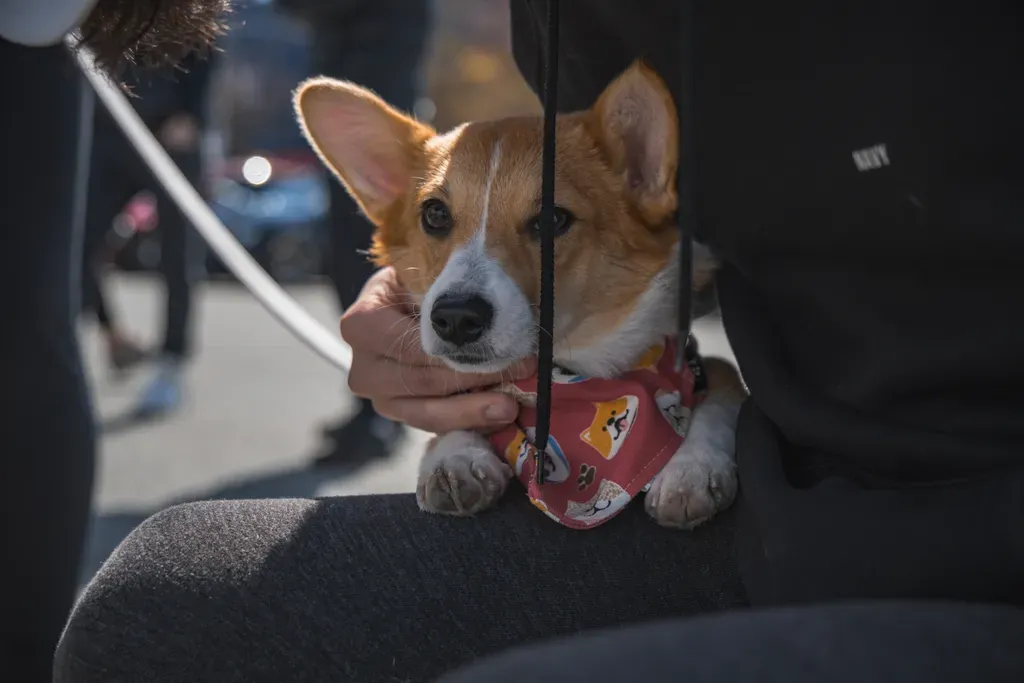Tips For Safe Dog Travel
Traveling with your corgi can be a great way to bond and explore new places together. However, it's important to keep your corgi's safety in mind when planning any car trip, whether it's a cross-country road trip or a quick jaunt to the dog park. There are a few things you should do before you hit the road to make sure your pup is safe and comfortable during travel. 
Check with your veterinarian
Before you hit the road with your corgi, it’s important to check in with your veterinarian to make sure your pet is healthy enough for travel and to get any necessary vaccinations. Once you’re on the road, keep an eye on your dog for any signs of car sickness and be sure to make frequent stops so that he or she can stretch their legs and relieve themselves.
Get your dog used to the car
The first step is to get your corgi used to the car. If your dog has never been in a car, start by simply sitting in the parked car with the engine off. Let your dog sniff around and explore the interior of the vehicle. Once your dog seems comfortable, try taking short car rides around the block. Gradually increase the length of each drive until your dog is comfortable riding in the car for longer periods of time.
On the Road
Traveling by car with your dog can be a great way to bond with your furry friend and explore the great outdoors together. However, it's important to take some safety precautions to ensure that both you and your dog have a safe and enjoyable trip. Follow these tips to make sure your dog is safe and comfortable on your next road trip.
Never leave your dog alone in the car
On a warm day, the temperature in your car can rise rapidly to dangerous levels for your pet. Leaving the windows open a crack does not significantly lower the temperature in the car. It's best to leave your pup at home on warm days, but if you must take them with you, never leave them alone in the car.
Be aware of the dangers of heatstroke
While people can cool down by sweating, dogs can only release heat through panting. If a dog is unable to pant adequately, his internal temperature will continue to rise, which can lead to potentially fatal heatstroke. Signs of heatstroke include excessive panting, drooling, lethargy, agitation, and seizures. If your dog is showing any of these signs, move him to a cool area immediately and call your veterinarian. To prevent heatstroke, never leave your dog in a parked car, even for just a few minutes. On warm days, walk your dog during the cooler hours of the morning or evening. And make sure he has access to plenty of fresh water at all times.
Make sure your dog is secured
Dogs should be restrained while in the car for their safety and yours. There are a number of ways to do this, and the type of restraint you use will depend on the size and temperament of your dog. Smaller dogs can be secured with a harness that attaches to your car's seat belt system. These can be found at pet stores or online. If you have a larger dog, you may need to use a car harness that attaches to a seatbelt or anchor system in your car, or a crate or barrier to keep them in the backseat. Whichever way you choose to restrain your dog, make sure it is comfortable and not too tight. You should also make sure they have plenty of ventilation and can see out the window if they want to.
When You Arrive
If you're traveling with your dog by car, there are a few things you should do when you arrive at your destination. First, find a safe place to park your car. If you're traveling with a puppy or small dog, make sure they are in a secure carrier. If you're traveling with a larger dog, they should be wearing a harness that is securely fastened to the car. And finally, make sure all of your dog's toys and treats are within reach so they can keep themselves entertained during the trip.
Have a plan for potty breaks
Whenever you’re driving with your dog, it’s important to have a plan for potty breaks. If you’re on a long road trip, this may mean making regular stops at rest stops or gas stations. If you’re just going for a short drive, you may be able to wait until you arrive at your destination. If possible, take your dog for a potty break before getting in the car. This will help minimize the chances of having an accident during the drive. If your dog does need to go while you’re on the road, pull over safely and let them out. Never leave your dog alone in the car, even if it’s just for a quick potty break.
Be aware of your dog's surroundings
When you and your dog first arrive at your destination, be attuned to your dog's energy and watch for signs of stress. If your dog is hesitant to get out of the car or is acting fearful, give him or her some time to adjust before exploring the area. Once your dog seems more relaxed, take a walk around the block together or explore a nearby park. This will help your dog get accustomed to the new surroundings and will also give you a chance to assess how your dog reacts to different Stimuli in the environment. If you are visiting a friend or family member's house, introduce your corgi to the resident pets slowly and under supervision to ensure everyone gets along.
Be prepared for emergencies
No matter how carefully you plan and prepare, there's always the potential for something to go wrong when you're traveling with your corgi. That's why it's so important to be prepared for emergencies.
Here are some tips to help you be prepared:
- Make sure your corgi is up-to-date on all of his vaccinations, and that you have a copy of his records with you.
- Bring along a first-aid kit specifically for your corgi. This should include items like gauze, Band-Aids, antiseptic wipes, and hydrogen peroxide (for cleaning wounds).
- If your corgi is on any medication, make sure you have enough with you to last the entire trip, plus a little extra in case of delays. You should also have a list of your dog's medications and dosages with you.
- Make sure you have your corgi's ID tags on him at all times, and that his microchip information is up to date.
- It's also a good idea to bring along a recent photo of your dog in case he gets lost.

